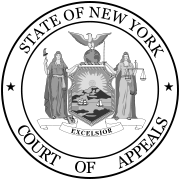
Schloendorff v. Society of New York Hospital
Encyclopedia

Case citation
Case citation is the system used in many countries to identify the decisions in past court cases, either in special series of books called reporters or law reports, or in a 'neutral' form which will identify a decision wherever it was reported...
, was a decision issued by the New York Court of Appeals
New York Court of Appeals
The New York Court of Appeals is the highest court in the U.S. state of New York. The Court of Appeals consists of seven judges: the Chief Judge and six associate judges who are appointed by the Governor to 14-year terms...
in 1914 which established principles of informed consent
Informed consent
Informed consent is a phrase often used in law to indicate that the consent a person gives meets certain minimum standards. As a literal matter, in the absence of fraud, it is redundant. An informed consent can be said to have been given based upon a clear appreciation and understanding of the...
and respondeat superior
Respondeat superior
Respondeat superior is a legal doctrine which states that, in many circumstances, an employer is responsible for the actions of employees performed within the course of their employment...
in United States
United States
The United States of America is a federal constitutional republic comprising fifty states and a federal district...
law
Law
Law is a system of rules and guidelines which are enforced through social institutions to govern behavior, wherever possible. It shapes politics, economics and society in numerous ways and serves as a social mediator of relations between people. Contract law regulates everything from buying a bus...
.
Facts
The plaintiff, Mary Schloendorff, was admitted to New York Hospital and consented to being examined under ether to determine if a diagnosed fibroid tumor was malignant, but withheld consent for removal of the tumor. The physician examined the tumor, found it malignant, and then disregarded Schloendorff's wishes and removed the tumor.Judgment
The Court found that the operation to which the plaintiff did not consent constituted medical battery. Justice Benjamin Cardozo wrote in the Court's opinion:Schloendorff, however, had sued the hospital itself, not the physicians. For this reason, the Court found that a non-profit hospital could not be held liable for the actions of its employees.

